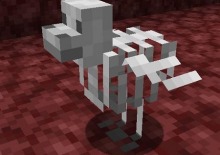Advertisement
I Am Cat
I Am Cat is a quiet exploration game where players embody a household cat and interact with the world from a feline perspective. Instead of focusing on goals or achievements, the game emphasizes everyday experiences—jumping onto a windowsill, hiding behind curtains, or curling up in a warm laundry basket. The home setting acts as both a playground and a stage for spontaneous events, shaped entirely by the player’s choices and curiosity.
Subtle Interactions And Natural Movement
Every part of the house reacts to the cat’s presence. A light paw tap might send a pencil rolling, or a sudden leap could tip over a stack of books. Movement feels natural, with smooth transitions between walking, running, jumping, and resting. The cat can climb shelves, investigate drawers, or knock on closed doors. Humans in the house move according to their routines, sometimes offering food, affection, or reacting with confusion depending on what the cat does.
The cat can perform actions such as:
· Sliding under furniture or squeezing through gaps
· Scratching carpets, furniture, or walls
· Observing fish tanks or chasing shadows
· Meowing to attract attention or express needs
· Sleeping in various locations based on comfort
These small behaviors make up the rhythm of each session and give players a sense of presence in a living space.
Environment And Tone
The home is rendered with attention to detail, from cluttered desks to half-open closet doors. Lighting changes gradually as time passes, and sound design mirrors real-life ambience: distant cars, humming appliances, the occasional gust through a window. There are no instructions or dialogue—the player understands the world through movement, sound, and the cat’s body language. This creates a calm, immersive tone that invites slow exploration rather than quick reactions.
Space For Curiosity
Each play session unfolds differently. The player may choose to spend time watching the rain, interacting with a human character, or exploring rarely visited corners of the house. The absence of structure allows for freedom, where even the smallest change—a drawer left open, a fly buzzing near a lamp—can shift the focus of the experience. Over time, players become familiar with the home’s layout, but the way they engage with it remains flexible.








































































































